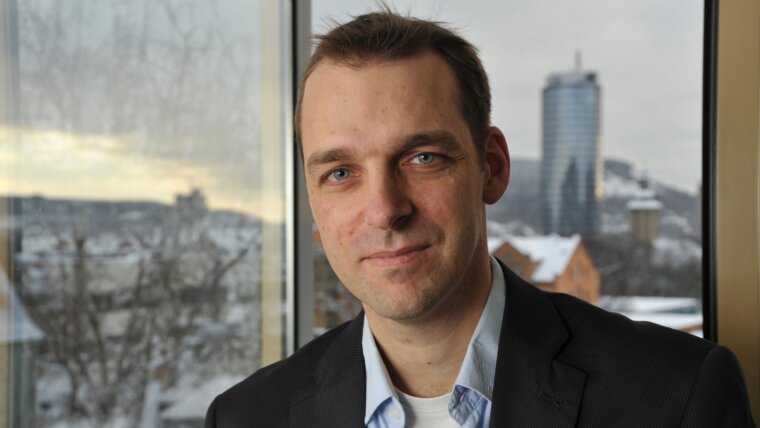
- Light
Published: | By: Vivien Busse, translation by Gleb Chupakhin
To search empty space for quanta: this is the self-set goal of the quantum physicist and ACP principal scientist Prof. Holger Gies and his Research Unit (FOR 2783) “Probing the Quantum Vacuum at the High-intensity Frontier” of the University of Jena. The FOR 2783 was funded in 2019 by the German Research Foundation (DFG) with about two million euros. Now, the project is receiving further financial support after the end of the first funding period. The DFG will continue to finance the FOR beginning in April 2022 with nearly three million euros for the next three years. The Helmholtz Institute Jena and the Universities of Düsseldorf and Munich (LMU) are involved alongside the Friedrich Schiller University Jena. About half of the funding will go to Jena while the other half will be received by the team members in Düsseldorf and Munich.
Research at the limits of possibility
“Promotion of such an initiative, more than just providing financial support, sends a signal”, says research unit leader Holger Gies. “It shows that the ideas we developed, which took years in some cases, have been recognized by international experts to have the potential of discovering new areas of physics at the limits of possibility.”
The Research Training Group is working on making quantum processes in vacuum, for example scattering phenomena of light – so-called quantum reflections – visible. For this, the team combines fundamental theory with experiments. In order to perform the latter, the researchers work with powerful lasers and with new, precise measuring techniques. While the development of concrete scenarios for the detection experiments of quanta in vacuum and the necessary detector and laser development were the focus of work during the first funding period, work during the coming funding period will concentrate on construction and, for the first time, performance of the detection experiments. A significant portion of the DFG funds will therefore be used for the development and construction of highly sensitive detectors that are capable of identifying the expected quantum trails in a vacuum. In addition to experiments performed in their own laser laboratories, the team plans experiments at the European X-Ray Free-Electron Laser (XFEL) in the Helmholtz-Konsortium (Helmholtz International Beamline for Extreme Fields) in Hamburg. This laser operates with a globally unique ultra-short and extremely strong X-ray flash. The experimental idea of the Jena FOR is regarded as one of the most significant experiments within the Helmholtz consortium.
Support young researchers
The Research Training Group will invest the majority of the DFG support into personnel resources. “We would like to give the opportunity to work at the forefront of this project dealing with fundamental physical questions expressly to researchers in an early career phase”, says Prof. Gies. The funding should be used especially to extend and create employment for PhD and postdoctoral students. Additionally, two international female scientists have each received a Mercator Fellowship from the DFG and will collaborate on the project. “The cooperation of international researchers helps our project to be visible worldwide and allows for additional international networking among the new scientific generation” according to Gies.